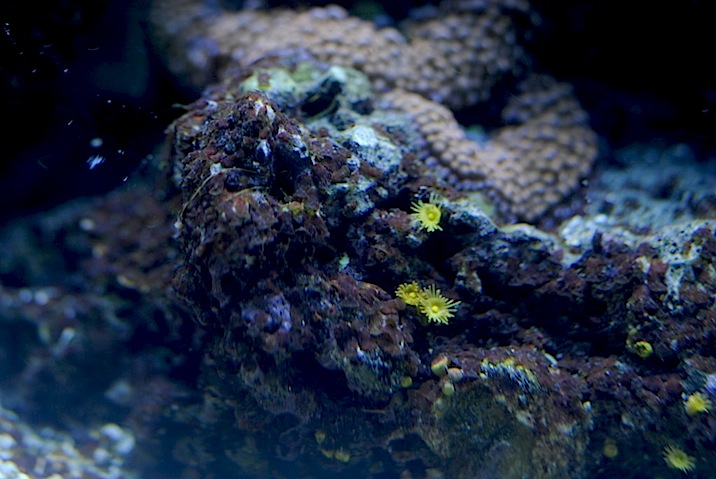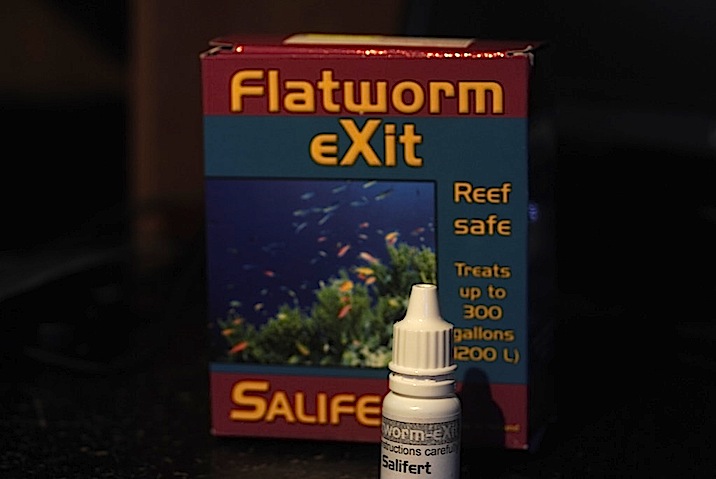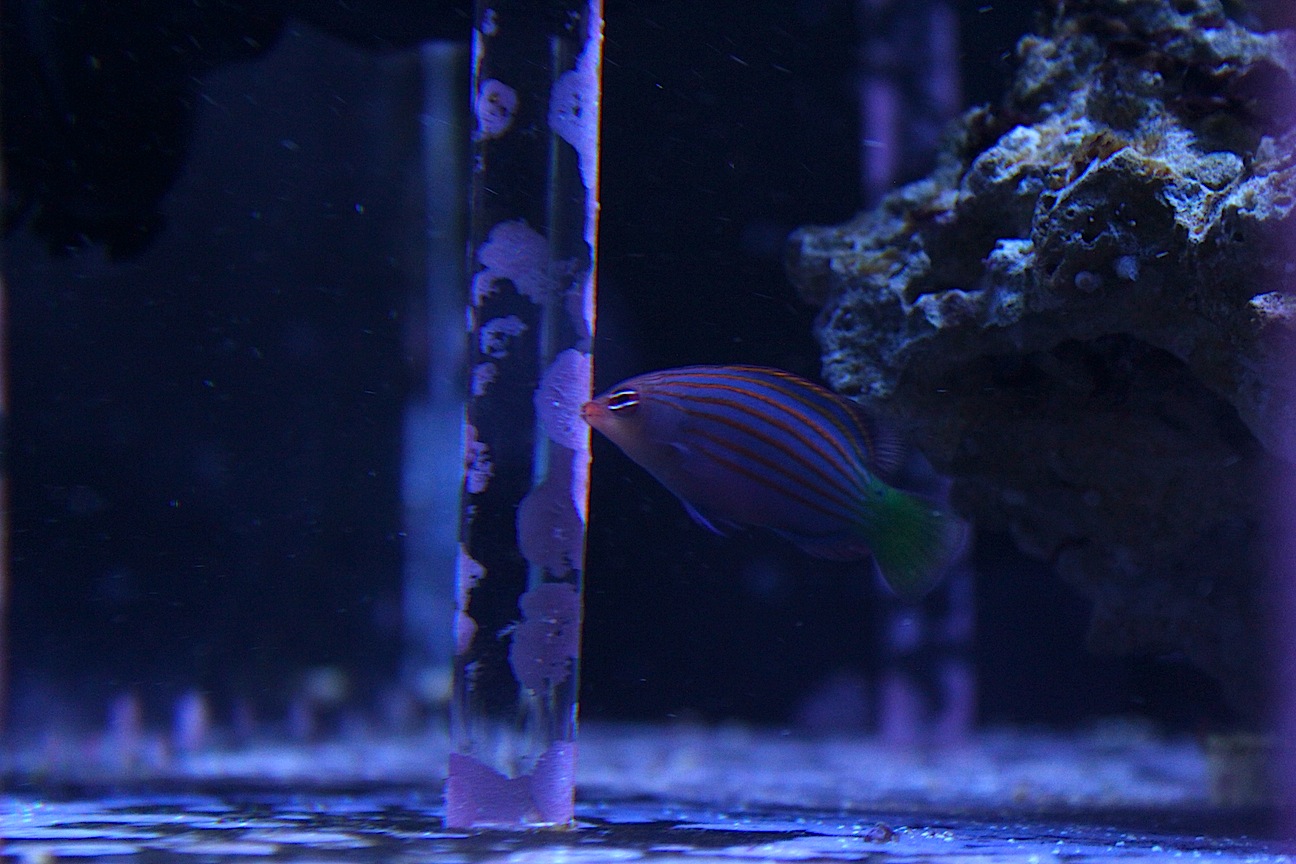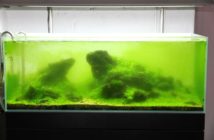If you have ever fought a battle against Aiptasia anemones, then you know what a pain it is to get rid of an aggressive aquarium pest. Aiptasia are very hard to get rid of if left unchecked, and like Aiptasia, there are many pests that hitchhike into our aquariums on corals and live rock and absolutely take over. One of the most prolific pests to enter into our salty tanks are the red Planaria flatworms. These rust colored worms are relatively harmless, but they reproduce so quickly that they can blanket corals and block out light, causing localized bleaching. Fortunately, there are methods to get rid of flatworms.
Red Planaria flatworms (Convolutriloba sp.) are generally rust colored, like mentioned above, and they can be further identified by a trio of lobes at the worm’s posterior that drag behind they crawl around. This pest feeds primarily through photosynthesis and they can quickly multiply to the point that they fall under a plague category. But don’t expect to kill them in your aquarium without repercussions. One main thing to know about these flatworms is that when they die, they releaser a toxin in the water that has the ability to kill sessile inverts and even fish if a large amount of the worms die. The problem here is not when you kill one flatworm, but when you kill them in mass numbers.
Before we talk about how to kill the worms, there’s a sure fire way to avoid the flatworm headache altogether, and that’s to avoid introducing these critters into your tank in the first place. The number one best way is to quarantine all corals before introducing them to your aquarium, but another effective solution is to simply dip your new coral in an iodine solution. Dipping your coral and rock ensures you get rid of most of the pests, but it’s not always 100% effective and can still lead to an outbreak. For that reason alone, we highly recommend placing your new purchase into a quarantine tank, allowing you to observe and decide whether your recent buy is pest free. Another way to prevent a Planaria invasion is to closely examine any coral or rock prior to purchase.
Say you fail to take these precautions and you have already introduced this flatworm into your system. Well let me tell you it is a tough battle. Failing to do the first step mentioned above myself, I know what it’s like to battle red Planaria. Once I found I had this pest, I went straight into research. There are two main approaches you can take to rid yourself of the worms, and those are either natural or chemical. For the natural method, you have three main techniques: nutrient reduction, natural predators, and manual removal. For the chemical approach, I went with a popular Salifert product called “Flatworm eXit”. Some approaches work for some and don’t for others. We took both approaches and recorded our results.
For the natural approach, we combined all three techniques. First was reducing nutrients. While it is believed that red Planaria get most of their nutrients from photosynthesis, we also know that the flatworms do get some nutrients from the water column. To accomplish this, we added more filtering material (Purigen in our case) and we also reduced the amount of food entering the aquarium. The skimmer was also adjusted to pull more dissolved organic material. Also, because we now know flatworms release toxins when they die, tripled the amount of carbon as a precaution. Next was the natural predator. We’ve heard stories that the target mandarin and various wrasses naturally to eat on these critters, so we went ahead and added both a Target Mandarin and a Sixline Wrasse to help with the battle. Lastly was the manual removal. This technique is fairly simple. What you do is combine airline tubing with a rigid tube to create a cheap and easy to manage flatworm siphon. You then target siphon these worms out, greatly reducing their numbers.
After combining all these methods and giving this approach roughly three weeks, we came to the following conclusions. Reducing the nutrients was not really very effective, since the worms are photosynthetic. The worms would still quickly multiply and fill the spots where the worms were manually removed. As for our predators, the Target Mandarin did not aggressively eat these pests, though it did pick around them causing some to detach from the rock work. The sixline wrasse, on the other hand, went did attack the worms. Now the sixline did not take it upon its own effort to pick and search for the flatworms, but if one or two occasionally floated around, it would eat them. So we find this technique to also not be as effective in the long run, though it would depend on the voracity of the pest eating fish. The siphoned method did work quite well, but it would take a constant siphoning to properly dispose of all these flatworms completely, and by the time they are gone you might go through a bucket of salt or two for all the lost water. Although I did find that some folks were attaching some sort of filter material at the end of the siphon tube to simply filter the worms out, we questioned whether the worms were dying on the filter material and just releasing toxins into the water you were going to pour back into the tank. Needless to say, we did not take this approach. So all together, these three methods might work, but simply will not cut it if you want to get rid of the worms within days. So now let’s move on to the chemical approach.
In all the time I have been in the hobby, I try my best to stay away from chemicals being introduced into the aquarium. But after having no success the all natural way, we decided to try this method because we found many individuals using this product without any type of major downfall. This product is easily removed from the water column with carbon so keep that in mind. When the day finally came for our Flatworm eXit treatment, we prepared with plenty of carbon and an extra canister filter to properly run this carbon. I got home and thoroughly read the directions on the chemical and found two of the previously mentioned tips on the instructions of this product. One was to siphon out as many of the flatworms as possible to reduce the amount of toxins released, and the other was to run extra carbon to also absorb those toxins once the worms started to perish away.
Before starting the treatment, we removed all carbon from our system. This step is very important if now the carbon will weaken the treatment and it’s not necessary until after the worms start dying. We then siphoned out as many of the worms as possible, followed by dosing the amount of treatment indicated on the instruction. To my surprise, the flatworms started to wither away and detach from wherever they were within ten minutes. It was like it was snowing flatworms to the point that it was actually impressive how infested the system was. I let the product sit for roughly thirty minutes, then turned on the hang-on filter with carbon to begin removing the treatment and the toxins out of the water. We let the aquarium sit two more hours with carbon then observed. We still saw a couple of the worms moving around and not showing any side affects of the chemical, so I then stopped the carbon filtering and dosed half the recommended dose like the instructions indicated. After another thirty minutes with the second dose and the carbon back up and running, I finally won the battle. The flatworms were fully gone, and no matter of turkey basting or aiming water pumps to kick up worms revealed any living pests.
I am in no way or form stating that you should follow any of our experiment. The way you decide to approach this certain pest or plague is completely up to you. Like previously mentioned, some methods work and others don’t. The only way to simply avoid this is by dipping all specimens prior to introduction to a system and also quarantine. Always remember to practice safe reef keeping in order to keep a healthy and pest free aquarium don’t make the lazy mistake like I did but in the case that you do here are my observations.










